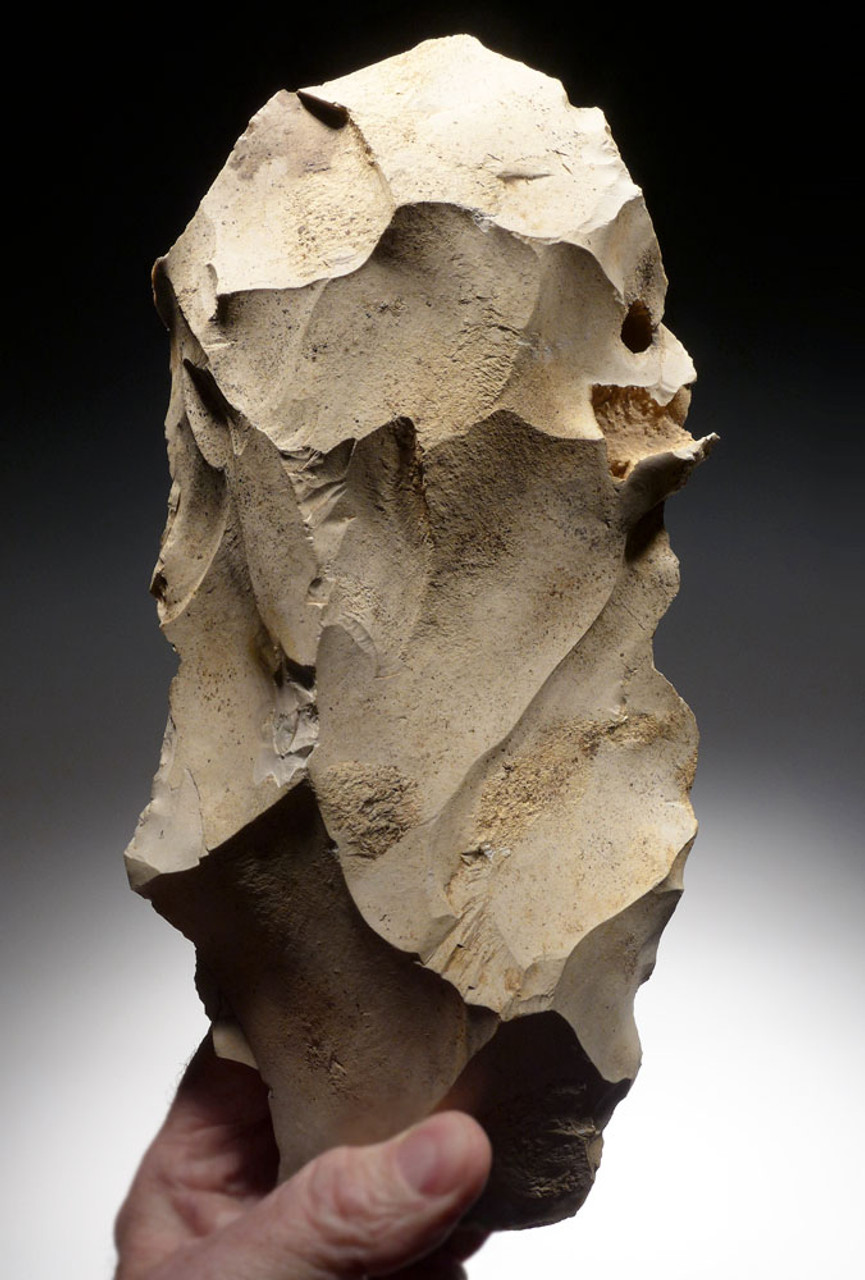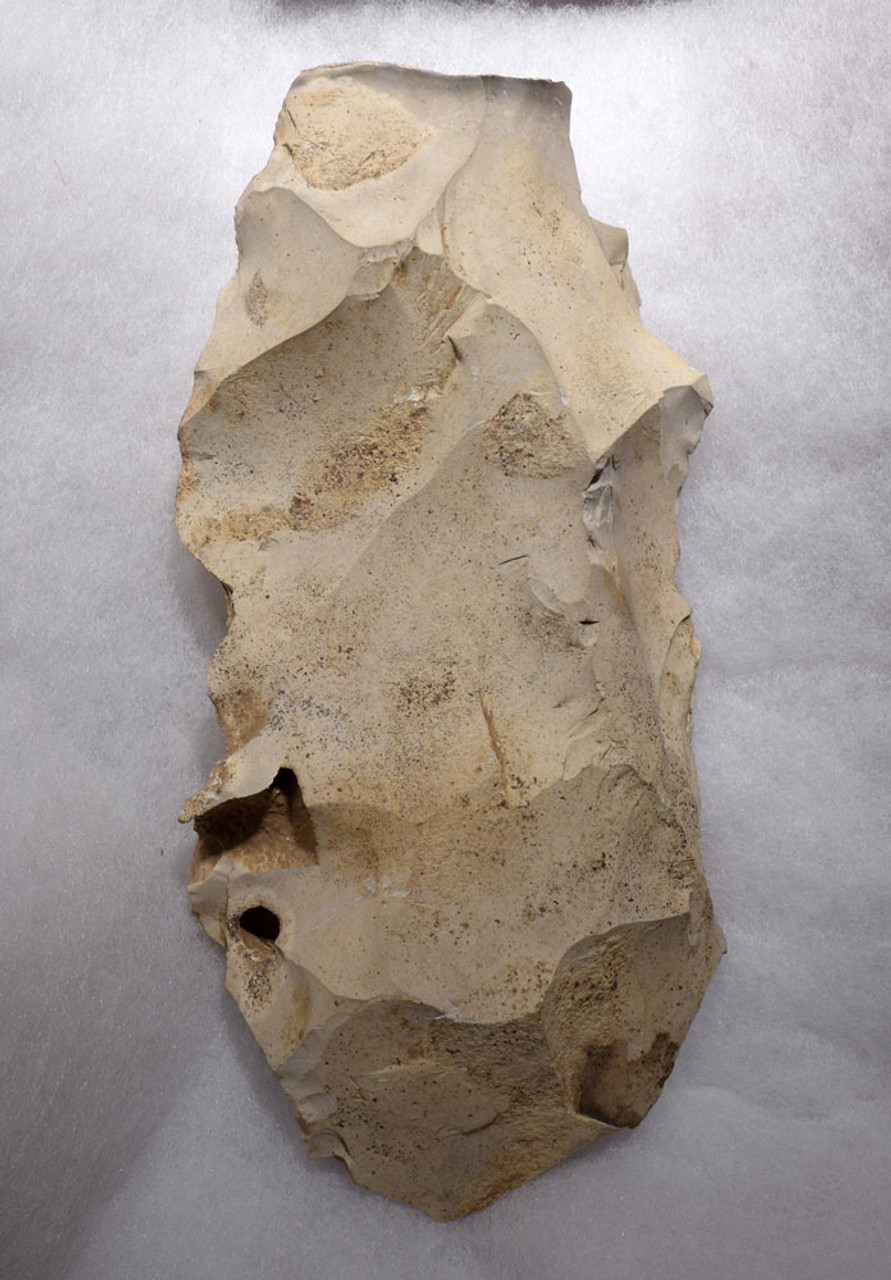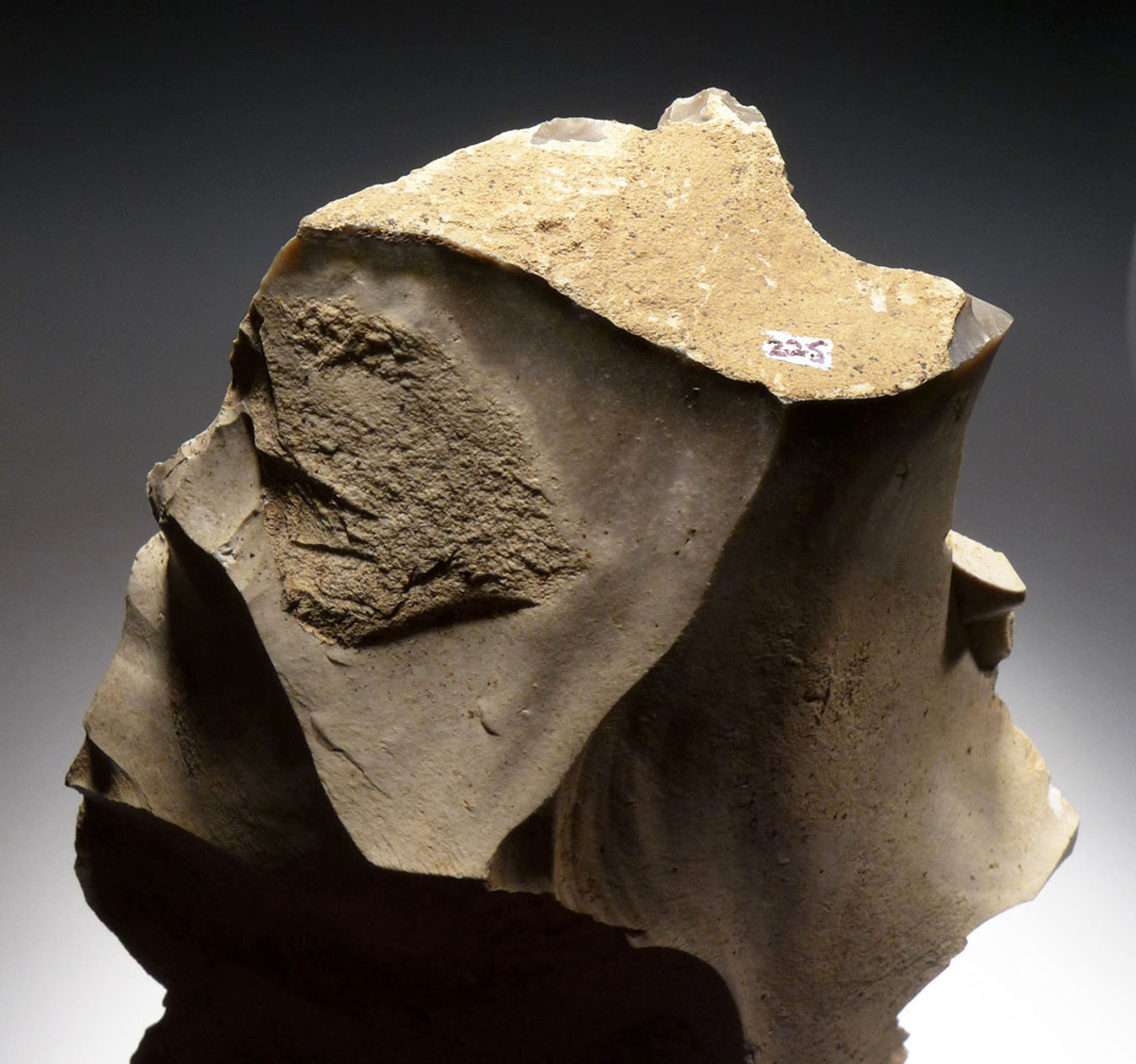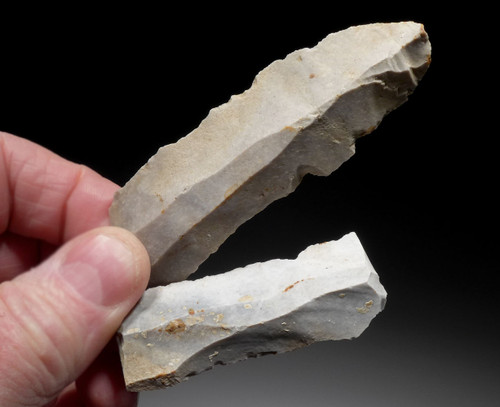Product Description
SEE MORE EUROPEAN NEOLITHIC ARTIFACTS
Despite half our operations having been based in Europe and extensive European travel and exposure, never in 23 years have we seen a Neolithic flake tool trade core like this from the famous Spiennes flint mining and trade region. We have surface collected at the site and heard from old-timers, that these cores existed many, many decades ago but finding even part of one in modern days, is not possible. With exceptional European Neolithic flint ground and flaked axes now fetching auction prices sometimes exceeding $10,000, frankly, this piece is more rare than axes of that caliber as a specimen such as this is truly beyond a once-in-a-lifetime discovery. It is a discovery that rarely happens in ANY lifetime.
This is a massive Spiennes neolithic flint flake tool core that was prepared and once traded in its form, like currency. All flake tools (not blades which came off a blade core), would have originated from cores like this. Think of this as a Neolithic person's bank account - the resource from which all their flake tools would be made from. This core has been expertly prepared and shaped by its original Neolithic trader. It shows an original flat striking platform (the original collector's catalog label still intact). This small flat surface also is the only remaining trace of the outer silex cortex layer.
Natural holes and cavities are seen in the flint. The size, holes and original 6000 year old flaking work elevate this magnificent specimen into a true work of Neolithic sculptural art which is why we had a special display stand made for it. It is such a visual wonder and masterpiece! Large flint cores like these were once traded like currency and were as important to a Neolithic person as much as food, water and shelter were. Every flake tool that you would need back in this time would have come from cores like this!
Since the 1800's, European collectors have been walking the plowed farm fields of the region, surface-collecting flint Neolithic artifacts that are turned over by the farmers' plows each year. Unfortunately, that same plow that allows one to make such a discovery, is also responsible for breaking and damaging the flint artifacts. Large Neolithic flint objects such as cores and axes, are almost always found either damaged beyond value, or broken. We're not sure the details on how this piece was found as the original collector has long been deceased, but it could have been found in an un-plowed bordering wooded region of the farm fields, or discovered immediately when unearthed by the first plowing. How it remained unbroken and complete with all original flaking intact, is a miracle!
Advanced collectors should NOT miss this once-in-a-lifetime opportunity to acquire a PRIZE specimen from an important part of human history and from a prominent Neolithic site in all of Europe!
An important Neolithic artifact to display with a collection of tools since all tools originated from carefully prepared cores like these!
HISTORY
The declaration in the year 2000 by UNESCO protecting the Neolithic flint mines at Spiennes was highlighted by three main criteria as quoted: "1) The Neolithic mines at Spiennes provide exceptional testimony to early human inventiveness and application, 2) The arrival of Neolithic cultures marked a major milestone in human cultural and technological development, which is vividly illustrated by the vast complex of ancient flint mines at Spiennes. 3) The flint mines at Spiennes are outstanding examples of Neolithic mining of flint, which marked a seminal stage of human technological and cultural progress."
These mines cover more than 250 acres and represent the largest and earliest concentration of ancient mines in Europe! A large diversity of methods were employed to extract the flint by open quarries, pits and networks of underground horizontal galleries. Vertical tunnels range from 30 to 40 feet deep. Shafts were sunk through the chalk layer vertically with galleries radiating out from the shafts. Unique to Spiennes, when the flint was exhausted above the bedrock, the rock layer was penetrated to reach the chalk layer below. This feature shows the mastery these Neolithic humans had of their local geology!
Mines were dug with only the aid of antler picks and bone shovels demonstrating an incredible feat based on the expansiveness of the site. Despite the miners' knowledge to leave pillars in the horizontal galleries for roof support, skeletons of workers have been found in collapsed shafts at Spiennes.
Flint tools from the mining site at Spiennes represent an icon of Neolithic technology, trade and culture. Every collection should have at least one tool from this official 'world-class' site.
 US DOLLAR
US DOLLAR
 EURO
EURO
 AUSTRALIAN DOLLAR
AUSTRALIAN DOLLAR
 CANADIAN DOLLAR
CANADIAN DOLLAR
 POUND STERLING
POUND STERLING


































